TechRadar’s Year in Review 2024 – from tri-fold phones and super-smart rings to AI everywhere

2024 felt a lot like 1994. Back then it was the internet that was experiencing seemingly exponential growth: the worldwide web had only formally launched three years before, but by ’94 the first browsers and ecommerce platforms were in use, and websites were springing up everywhere.
I was a college student at the time, and it was all very exciting, albeit not yet something which impacted my daily life too much. But by the time I started work a few years later, it was inconceivable that I might do my job without using the internet constantly.
Substitute ‘AI’ for ‘the internet’ and you’ll have a pretty good idea of where we are right now. AI has been everywhere this year, like it was in 2023, but even more so. As you’ll read below, it’s infiltrating every aspect of our lives – and certainly every aspect of tech – and it will soon be impossible to imagine what the world was like before it.
Is that a good thing? That question makes no more sense than it would have if asked about the internet in 1994. The web has been great in many ways, terrible in others – but that’s more about how it’s been used than any inherent goodness or badness.
And so it will be with AI. The simple fact is that artificial intelligence will have an utterly transformative impact on the world; the next few years will be a case of holding on for dear life, as our everyday lives are changed in multiple ways.
Of course, there was more to 2024 than AI, and we saw some massive stories elsewhere in the tech world. VR hardware and experiences continued to improve, even if Apple’s Vision Pro didn’t quite take off as we thought it might, while smartphones gained an extra fold, new and improved smart rings offered fitness tracking without the screen, and gaming handhelds proliferated.
Expect much more AI, and more of everything else, in 2025. Until then, I hope you’ve enjoyed reading TechRadar in 2024, and have a happy New Year!
My year in tech
AI advances apace, but vintage tech still charms

As a chronicler of technology, it’s only natural as the year draws to a close that big moments, larger trends, disappointments, and surprises fill my thoughts – and they are my thoughts, not those of the AI systems I expended thousands of words on.
Graham Barlow has more to say about AI below, but of all the things I wrote about artificial intelligence, it was the stories that showed just how fast these generative platforms have come in a relatively short time that gave me the most joy. When I first asked ChatGPT to help me code and it failed miserably, I hesitated to return to the task. Now I’m glad I did. ChatGPT, like other emerging systems, is now an incredibly effective coding assistant. It was the a similar story with other platforms: Sora can create believable video, image generators now know how to count fingers, and Google’s NotebookLM can replicate realistic-sounding podcasts.
When I wasn’t writing about AI, I was trying out the latest augmented-reality headgear, and if I had to choose a standout device it would be Meta’s Orion. This sunglass-like wearable isn’t consumer-ready yet, but it easily offers the most impressive AR experience to date – and, yes, it integrates AI. At the other end of the spectrum is the Apple Vision Pro; a year after launch, the most impressive wearable technology I’ve ever tried appears to be floundering.
This was also the year I dug into the tech archives and rummaged through drawers to rediscover some old favorites, including my 40-year-old Casio watch and an aging Pebble (an OG smartwatch if there ever was one). I also played on a refurbished Game Boy – that last experience was part of one of my favorite interviews of the year.
Other year-defining moments included the wild CrowdStrike outage, which should still serve as a warning to all people who worry about our infrastructure; new foldables, including one I test-drove in Paris (photographing a folding phone at the Louvre was a bucket-list moment); and capturing the solar eclipse with three smartphones at once – quite the challenge, but totally worth the effort.
The year in AI
If you think 2024 was wild, wait till you hear about 2029…
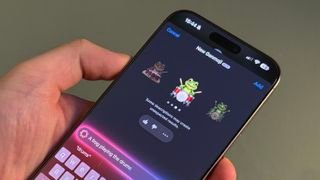
In 2024 Apple performed a spectacular U-turn away from AR and its Vision Pro headset, and went all-in on AI, doing its bit to push AI into the mainstream in the process.
While the rollout wasn’t the smoothest, Apple Intelligence is sprinkled throughout Apple’s operating systems in the form of notification summaries, Image Playground, Visual Intelligence and, my personal favorite, Genmoji, for making your own emojis. Genmoji is a genuinely innovative use of AI, and has the potential to actually get people excited about the technology because it’s so usable and fun (you can base emojis on your friends and family).
While most of the big AI platforms launched in 2023, 2024 was the year they became established. Meta kept pushing AI to its various social media apps, and even added it to its Ray-Ban smart glasses. ChatGPT kept improving, OpenAI added Sora video generation and ChatGPT search, X gave us Grok, Google gave us Gemini 2.0, and AI image generators like Midjourney and Adobe Firefly went from strength to strength.
While Genmoji was a highlight, my favorite moment was my mind-blowing and occasionally unsettling interview with Dr Ben Goertzel, one of the leading thinkers looking to manage the advance of AI towards the smarter-than-human superintelligence known as artificial general intelligence, or AGI, aka the singularity.
Goertzel believes it’s only a matter of years before the machines become smarter than we are, and that we’d better get used to the idea. 2029 is his estimate, at which point all bets are off and AGI will either put an end to disease, aging, and potentially even death, or it might decide that humanity is just a nuisance, and The Matrix / The Terminator becomes a reality. I, for one, welcome our new AI overlords – I just really hope they like us.
THE YEAR IN PHONES
It’s not the real deal yet, but AI will do it all eventually
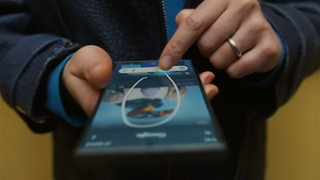
Nowhere did AI dominate the landscape more than in mobile computing. With every phone launch I attended, every product I reviewed, and every Snapdragon Summit I climbed, AI was a foregone conclusion. The disconnect between what phone makers see and what phone buyers want has never been greater; although, that said, the new phones this year were great, in spite of (never because of) the looming presence of AI. We saw impressive new foldables from Samsung and Google, while Huawei went one screen better with the first mainstream tri-folding phone.
But this was AI’s year. Just think, we started this year with Circle to Search on the Galaxy S24 Ultra, and now we’re ending it with Apple Intelligence on the iPhone 16 making up fake headlines in its news summaries. Look how far we’ve come! These AI features seem half-baked because they are. The real deal isn’t here yet, and I’m not even talking about artificial general intelligence; I’m just talking about a better Siri, or Bixby, or Gemini.
At Qualcomm’s Snapdragon Summit I saw it take a big leap in mobile processing power and power management with its new Snapdragon 8 Elite chipset, a platform that has the potential to radically change what AI can do. Qualcomm’s vision, which is similar to that of most phone makers, is for AI to become an ‘agent’ that works as a middleman between you and your phone. You won’t need to worry about Settings, or your home screen, or even apps, really – you’ll just tell the AI what you want to do, and it will do the rest.
In the meantime, some of the AI features are already pretty good. Google’s Pixel 9 Pro does a great job of things like transcribing meeting notes or screening your calls. Amazon’s new Kindle Scribe uses AI for the best handwriting recognition ever. And even you’re not thrilled with Apple Intelligence and its summaries, at least we can all appreciate the way AI has pushed smartphone photography past its limits.
So, 2024 was the year for AI on mobile devices, and soon enough it won’t feel like gimmicks and parlor tricks – it will actually help us do the things we need with less effort.
THE YEAR IN COMPUTING
Finally, a reason to get excited about Windows laptops again

Apple has dominated the laptop scene for the past few years, releasing a series of brilliant MacBook models powered by its own chips that offer performance, battery life, and value for money that Windows 11 laptops from the likes of Dell, HP and Lenovo just couldn’t compete with.
With the launch of the M3-powered MacBook Airs in March it looked like 2024 was shaping up to be another year in which MacBooks would be the laptops to beat. Instead, we got something of a renaissance in Windows 11 laptops, mainly thanks to Qualcomm’s Snapdragon X chips.
Like Apple’s M3 (and M4, which came to MacBooks later in the year), the Snapdragon X series are ARM-based chips that, unlike traditional chips from Intel and AMD, have been created with efficiency and mobile use in mind.
The result is laptops that offer fast performance and long battery life, and we saw a wave of truly excellent devices, such as the Dell XPS 13 (2024) and Microsoft Surface Laptop 7, that have challenged Apple’s MacBooks in our best laptops list.
This has made Qualcomm a major player in Windows world, challenging the two established titans Intel and AMD. While neither of those two have had a particularly good year, Intel in particular has had a rocky 2024, with CEO Pat Gelsinger standing down after a particularly poor set of results.
Both AMD and Intel have released new chips to take on Qualcomm, and from what I’ve seen so far Intel’s Core Ultra Series 2 chips show a lot of promise, especially when it comes to battery life. However, there’s no getting past the fact that Intel – a company that was so dominant in the processor market for so long – ends the year in a precarious position.
As for 2025, I’m looking forward to seeing what Nvidia has in store. It’s tipped to be announcing its next-gen RTX 5000 series graphics cards as soon as CES next month, and they could take PC gaming to new heights – though I do worry about the price tags they’ll come with.
THE YEAR IN TVS
The year that mid-range mini-LED TVs went mainstream
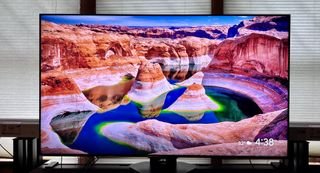
A few years ago, a new high-end technology that goes by the name ‘mini-LED’ launched as a high-end alternative to the best OLED TVs, promising dazzling brightness but with far superior contrast to regular LED TVs. Fast forward a few years, and while OLED TVs basically cost exactly the same as they did before, mini-LED is now taking over the more affordable end of the TV market.
At least, it’s taking over in our list of recommendations. The likes of the Hisense U8N, TCL QM851G, Hisense U6N and TCL C805 all offer amazing value for money at a huge range of screen sizes – those two companies really turned the screws on Samsung in the contest for places on our list of the best mini-LED TVs, and put a lot of pressure on next year’s more expensive TVs to really make a case for themselves.
One elite TV this year that successfully did just that was the Samsung S95D, which won our TV of the Year award, thanks to its new anti-reflection screen, which was a first on an OLED TV. OLED’s low brightness mean it’s prone to distracting reflections – no problem for dark-room movie viewing, but not so great for sports during the day – so Samsung solved this with a light-dissipating layer over the screen; and combined with the amazing picture quality and stunning design it made the S95D our most-talked-about TV of 2024. Samsung told us that this tech could come to more TVs if people like it – here’s hoping we’ll see more at CES 2025.
THE YEAR IN VR/AR
Apple’s Vision fades, but Meta may see real rivals soon

The year kicked off with the launch of what many believed would be the one headset to rule them all: the Apple Vision Pro. Alas, it came, it saw, and it failed to conquer. Once the initial hype wore off, early adopters – including our own Lance Ulanoff – found they simply weren’t using the gadget very often, as the expensive headset failed to offer a substantial productivity or entertainment upgrade over a MacBook or iPad, or feel sufficiently superior to the VR competition.
We also saw the Pico 4 Ultra, which boasts some super foot-tracking tech, and a PC/Standalone hybrid in the shape of the Vive Focus Vision. Unfortunately each device disappointed in its own ways, with a major issuing being lackluster software offerings that fail to compete with the excellent catalog you’ll find on Quest systems, which includes Batman: Arkham Shadow, which I hailed in my review as “an almost flawless VR experience”.
As the saying goes, if you can’t beat ‘em, join ‘em, and this year saw Lenovo, Asus, and Xbox announcing their plans to build Horizon OS headsets – Horizon being the operating system Quest headsets use. This would presumably give those headsets access to the full suite of Quest titles, and while we’re yet to see the devices, their announcement may have been the biggest VR announcement of 2024.
Next in line in terms of major launches was probably the Meta Quest 3S, an affordable Quest 3 alternative with the same brain but a bulkier body and less-crisp displays (though I think the Meta Quest 3 is worth paying extra for), and the Meta Orion AR glasses – they may still only be a prototype for now, but they’ve already blown away many who’ve tried them, including the aforementioned Mr Ulanoff.
Slipping in just under the 2024 wire, Samsung and Google showcased their Android XR software platform, which will power new headsets and glasses. While what the duo is promising is reminiscent of Apple’s Vision Pro hype, I’m optimistic that their Android offering might finally give Meta some serious competition in 2025.
THE YEAR IN AUDIO
Sonos stumbles, and hearing health is the New Big Thing
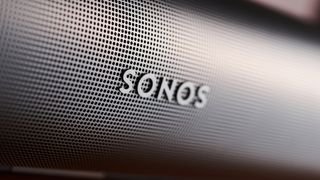
2024 in the world of audio has really been about risers and fallers. Let’s start with the rise of open-ear headphones. These weren’t new in 2024, but they suddenly became the hottest category this year. At first, these looked like just a new option for runners, because the way they push sound into the ear yet don’t actually fit in the ear means you can still be aware of your surroundings. But then it turned out that lots of other people would prefer not to put things in their ear too, both for comfort and to protect their long-term hearing. Expect to see a lot more of these in 2025.
Speaking of open-ear buds, though, new AirPods arrived in two flavors. The basic and cheaper AirPods 4 are fine, but the AirPods 4 with Active Noise Cancellation are a very interesting option for iPhone users. Plus, the AirPods Pro 2 got a truly ground-breaking new hearing-aid mode, and we can expect to see, and hear, a lot more of this health-focused tech in the future.
Now we need a faller, and no one took a bigger tumble than Sonos. The company released a truly disastrous change to its app that threw all of its goodwill in the trash overnight, and cast a large cloud over the launch of its first headphones, the Sonos Ace. By the time the Sonos Arc Ultra soundbar came out, it had barely clawed back any ground. It needs to have a really good 2025…
But there’s always space for a comeback story, after all, 2024 was the year we went loopy over a beautiful new cassette player and a stunning portable CD player from FiiO, and a lovely combo player from TEAC.
THE YEAR IN CAMERAS
The retro revolution looks like it’s here to stay

Despite feeling like a relatively quiet year for leading camera brands, 2024 has actually served up some real treats. The Canon EOS R5 Mark II scooped TechRadar’s camera of the year award and with good reason – it boasts a speedy 45MP stacked full-frame sensor, incredible autofocus skills including Eye Control AF, plus an innovative in-camera 400% upscale editing function that could end the megapixel race for good.
DJI had another busy year, with its broad portfolio of new devices including drones, action cameras and vlogging cameras, and it consequently scooped TechRadar’s camera brand of the year for the second year running – and for good measure it’s avoided a ban on its drones in the US, for now. Other honorable mentions go to Nikon and its 5-star Z6 III, and Insta360 for doubling down in the pocketable video camera space, in particular with its unmatched X4 360-degree camera.
The people’s vote went to the Fujifilm X100VI – a pricey premium compact that nonetheless attracted huge preorder numbers, and which is still on backorder the best part of a year later. I found the highly anticipated retro camera a delight to shoot with at its Tokyo launch. 2024 was also the year that film made a comeback, with the Pentax Film Project delivering the legendary brand’s first film camera in decades, the surprisingly charming half-frame Pentax 17.
2024 was also the year that the humble point-and-shoot camera enjoyed a comeback, particularly with young audiences and thanks in no small part to TikTok. We never expected an old, mediocre and cheap Nikon compact’s popularity to blow up, but the Coolpix S6900 in pink did just that.
So what about 2025? As cameras, and AI image and video generation, get closer to perfection we might see increasing pushback, with demand for simple, flawed, disconnected, retro cameras continuing to grow. 2025 could well be the year that dumb cameras win out over smart tech.
The year in gaming
Sony’s mid-gen upgrade points to the future of consoles

Sony’s PlayStation 5 Pro was the biggest gaming hardware release of 2024, and while it wasn’t unexpected – rumors had been building all year – it did give us a window into what future consoles might offer.
While it brings welcome boosts to storage and connectivity, Sony’s PlayStation Super Spectral Resolution is the headline feature, offering AI-driven upscaling that enables users to enjoy enhanced graphical fidelity and higher frame rates, at the same time. Is this what we might see more of in future console upgrades as the gap between fidelity and performance closes? Perhaps. The new console was supported by a strong lineup of games like multiplayer phenomenon Helldivers 2, and the absolutely joyous Astro Bot, making 2024 another robust year for PlayStation.
Xbox didn’t join the mid-gen-upgrade party this time around, and instead Microsoft iterated on its existing hardware range by offering a larger-capacity Xbox Series S 1TB and releasing a Digital Edition of its existing Series X. Games-wise, Microsoft finished the year much stronger than it started it with the release of the epic Call of Duty: Black Ops 6 and action-adventure hit Indiana Jones and the Great Circle.
Nintendo continued to publish excellent games for the Switch, such as The Legend of Zelda: Echoes of Wisdom and Paper Mario: The Thousand-Year Door, and while we did see new hardware, it wasn’t what we were expecting or hoping for: the Nintendo Alarmo! clock took us all by surprise, and you can now be woken up by your favorite Nintendo characters.
Returning to hardware, SteelSeries’ Arctis GameBuds became the new gold standard in what gaming earbuds can offer, Razer’s Wolverine V3 Pro became the new premium Xbox controller to beat, and Secretlab’s Titan Evo NanoGen Edition chair offered a new level of comfort.
The Nintendo Switch 2 will be the biggest thing in gaming in 2025 – should it actually arrive, which feels very likely at the time of writing – but with rumors that Xbox and PlayStation are also looking at building new handheld gaming devices, next year could get very interesting.
THE YEAR IN FITNESS
Ringing the changes as time stands still for smartwatches
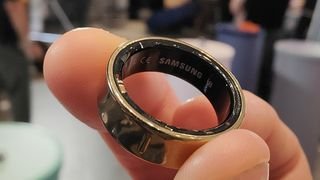
What a year 2024 has been. I said last year that I believe we’d reached peak smartwatch, with not much scope left for the form factor to innovate, and that this year’s more interesting developments would come in other product fields, such as smart rings.
That prediction has largely been borne out. The Samsung Galaxy Watch Ultra looked very similar to the Apple Watch Ultra 2, while the Apple Watch Series 10 and Google Pixel Watch 3 were, like their predecessors, fairly iterative updates, with slightly bigger and slightly thinner displays being the most significant changes. Outside of smartwatches, though, there’s been plenty of action: this has been the year we’ve seen the widespread adoption of previously fringe tech, from smart wearables to continuous glucose monitors (live broadcasting of your blood sugar!) to AI fitness coaches.
As elsewhere, fitness and wearables brands have been eager to embrace the potential of AI (in many cases, before it’s really ready). Strava’s Athlete Intelligence and apps like Runna have been quick out of the gate with AI-generated feedback and workout insights. We asked ChatGPT for workout tips, and Oura got in on the action with its Advisor, a health and fitness chatbot that lives in the Oura app.
Speaking of Oura, 2024 was the year smart rings hit their stride, with the release of the RingConn Gen 2, the Samsung Galaxy Ring and the Oura Ring 4. Fun functionalities like gesture controls, and automatic workout tracking for multiple activities, show how far the technology has come in such a short space of time: check out our best smart rings guide for more on the early leaders in the race to dominate the space.
Looking forward to 2025, I think we’ll see continuing move away from the traditional fitness watches and notification-based devices, and towards smart rings and screenless trackers. A WHOOP 5, anyone?
THE YEAR IN ENTERTAINMENT
Streaming giants entertain and enrage in equal measure

Let’s get the bad news out of the way first. Away from the on-screen action, Max, Disney Plus, Hulu, Paramount Plus, and Peacock all raised their prices, Netflix angered customers by scrapping its cheaper tier, Prime Video assailed us with ads unless we paid more, and the Disney Plus password crackdown once again made us feel like we were being taken for a ride.
On a happier note, this year’s entertainment calendar was packed with global events that drew in large audiences to the best streaming services: from the Olympics and the Euros to Taylor Swift’s ‘Eras Tour’ on Disney Plus and Olivia Rodrigo’s Guts World Tour concert special on Netflix. When it came to new movies, we were taken on an emotional rollercoaster ride dominated by sequels like Deadpool and Wolverine and Moana 2. Highlights included Pixar’s return to form, with Inside Out 2 becoming the highest-grossing animation movie of all time, while lowlights included Borderlands, which brought a run of impressive video game adaptations to a crashing halt.
On the TV show front, video game adaptations fared much better, with Fallout and Arcane season 2 picking up the torch from The Last of Us to become massive hits. Some of the other most-streamed shows of the year include True Detective: Night Country, Shōgun, The Boys, Bridgerton, Agatha All Along, and my personal favorite, The Penguin.
As we look to the year ahead, make sure to check back in with TechRadar, where we’ll bring you all the latest streaming news, recommendations and tips to get the most out of your services, including how to become more savvy by pausing your subscriptions.
The Year in Smart Home
Matter matters, but features matter more

It’s been a middling year for smart home tech, with few major product launches or big developments, but rather lots of iterative improvements to the building blocks of smart-home technology. We’ve also seen the emergence of some interesting trends that could point to the future of how smart devices are integrated into our homes.
One important yet relatively slow-moving part of this story is the connectivity standard Matter. We’ve seen versions 1.3 and 1.4 roll out in 2024, introducing support for new device categories across energy management and new household appliances, as well as improvements to features like lighting control and Thread networks. Big news for smart home enthusiasts and product developers, yes, but not exactly a reason to stop the presses. Indeed, Matter continues to be something that matters, but only in the background.
Elsewhere, we’ve seen trends emerging in terms of user experiences. 2024 began with Samsung upgrading its SmartThings ecosystem with a new TV-centered experience, demonstrating a push to integrate smart home technology into appliances rather than using dedicated hubs like those built into some smart speakers. Much like the trends we’ve seen in AI adoption, it’s becoming increasingly apparent that in order for smart home technology to take off, it has to be a feature, not a product. To that end, Samsung is also putting screens on more and more appliances, kitting each out with SmartThings for whole-home control.
Similarly, in a trend I’ve catchily labeled “stuff that does other stuff”, we’ve continued to see a focus on multi-functional smart home devices. On the more bizarre end of the spectrum, we saw an air purifier with a mounted cat bed from LG at IFA 2024, a follow-up to its more sensible air-purifying table from a few years ago.
There’s still no sign of Apple’s long-rumored smart display, and Alexa’s big overhaul has quietly been pushed to 2025, so there’s plenty to be excited for in the coming year.
- Tech Resolutions 2025 – 7 ways to survive January and upgrade your life with tech this year
- The 52 best movies of 2024: TechRadar’s favorite films of the year on Netflix, Prime Video, Max, Disney Plus, and more
- The 50 best shows of 2024: TechRadar’s top TV picks of the year on Netflix, Prime Video, Max, Disney Plus, and more
- TechRadar Choice Awards 2024 winners: we crown the best tech of the last year



